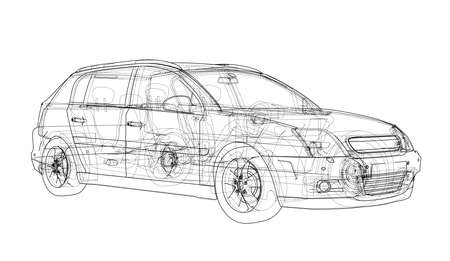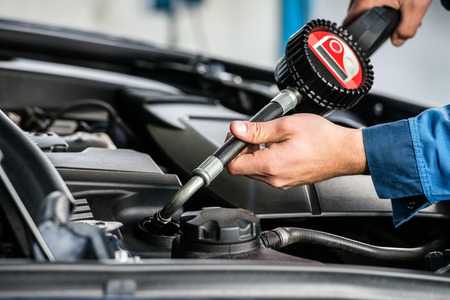1. Understanding High-Performance Brakes
When you start talking about making your car faster, it’s easy to focus on horsepower and flashy upgrades. But if you want to drive hard and stay safe, upgrading your brakes is just as important. So, what exactly are high-performance brakes? In simple terms, these are braking systems designed to deliver more stopping power, better heat management, and improved durability compared to the standard brakes that come with most cars from the factory. While regular brakes are built for daily driving and typical road conditions, high-performance options use advanced materials like carbon-ceramic or slotted rotors, stainless steel brake lines, and more aggressive brake pad compounds. This technology allows them to resist fade during repeated hard stops, provide a firmer pedal feel, and offer more consistent performance under demanding conditions—think track days or spirited canyon runs. The result? You get shorter stopping distances and greater control when it really counts. That’s why anyone serious about speed should take their brake setup just as seriously as their engine mods.
2. Why Faster Cars Need Better Braking Systems
When you’re driving a faster car, everything happens quicker — including the need to stop. High-performance vehicles aren’t just about going fast; they also need to slow down and stop efficiently. The relationship between higher speeds and advanced braking is all about safety, handling, and performance. As speed increases, the force required to bring your car to a stop rises exponentially. That means your stock brakes might not cut it if you’re pushing the limits on the street or track.
The Science Behind Stopping Power
At higher speeds, kinetic energy multiplies. Brakes have to work harder and longer to dissipate this energy as heat. If your braking system can’t handle the extra load, you risk longer stopping distances, brake fade, or even total brake failure. Here’s how speed impacts braking requirements:
| Speed (mph) | Kinetic Energy (relative) | Braking Distance (ft) |
|---|---|---|
| 30 | 1x | 45-55 |
| 60 | 4x | 130-140 |
| 90 | 9x | 280-300 |
Why Advanced Brakes Matter for Performance Cars
A high-performance braking system uses better materials and smarter engineering to manage heat and maintain grip under pressure. This gives drivers more confidence in emergency situations, sharper handling in corners, and faster lap times at the track. Simply put: when you upgrade your engine, you need to upgrade your brakes too — for both your safety and your car’s peak performance.

3. Types of Brake Upgrades Available
When it comes to making your car stop as fast as it goes, there are several popular brake upgrade options in the U.S. market that drivers love for their performance and reliability. Each type of upgrade targets a specific aspect of braking—whether its improving stopping power, heat dissipation, or pedal feel. Let’s break down the most common choices so you can decide what fits your driving style and needs best.
Big Brake Kits
If you’re looking for the ultimate in stopping performance, big brake kits are where it’s at. These kits usually include larger calipers and rotors compared to your stock setup, which means more surface area to dissipate heat and more clamping force to slow your wheels. Big brake kits are especially popular with enthusiasts who track their cars or those running high-horsepower builds. They look awesome behind open wheels and seriously boost confidence during aggressive driving.
Performance Brake Pads
Sometimes, all you need is a better set of pads. Performance brake pads use advanced compounds that offer stronger bite and improved resistance to fading when things get hot. Whether you’re carving through mountain roads or doing a spirited drive to work, upgrading your pads can make a noticeable difference without breaking the bank.
High-Performance Rotors
Swapping out your factory rotors for slotted or drilled versions can help keep things cool under pressure. Performance rotors are designed to shed heat faster and reduce the chances of warping or brake fade during heavy use. Slotted rotors help wipe away debris and gas buildup, while drilled rotors improve cooling but are best suited for street use rather than hardcore track days.
Braided Stainless Steel Brake Lines
For a firmer, more responsive brake pedal, many American drivers turn to braided stainless steel brake lines. Unlike rubber lines that can flex and expand under hard braking, braided lines maintain consistent pressure, so you get precise feedback every time you hit the brakes. This upgrade is relatively affordable and pairs well with any other braking improvements you might make.
Choosing What’s Right for You
No matter if you’re building a weekend track toy or just want safer stops on your daily commute, there’s a brake upgrade option out there for every American driver. Consider how and where you drive most often before making your pick—and don’t forget that combining multiple upgrades can give you the best results both in safety and performance.
4. Real-World Benefits on American Roads
When you upgrade your car’s brakes, the advantages go far beyond the racetrack—they make a huge difference in everyday American driving situations. Whether you’re commuting through city traffic, navigating suburban roads, or heading out for a long road trip across state lines, high-performance brakes deliver real-world benefits that every driver can appreciate.
Shorter Stopping Distances
One of the most significant perks is shorter stopping distances. In sudden stop-and-go scenarios common on U.S. highways and urban roads, being able to halt your vehicle quickly can mean the difference between a close call and a collision. High-performance brake systems use advanced materials that grip better and react faster, giving you crucial extra feet of stopping power—especially important when hauling passengers or driving at highway speeds.
Fade Resistance During Long Drives
On classic American road trips or during mountain descents, regular brakes can overheat and “fade,” meaning their stopping power drops just when you need it most. Upgraded brakes are engineered to handle heat better, maintaining consistent performance mile after mile. This fade resistance is vital not just for sports cars but also for SUVs and trucks often used for family vacations or towing trailers coast-to-coast.
Boosted Driving Confidence
Knowing your brakes will respond instantly, no matter the situation, translates into greater confidence behind the wheel. You’ll feel more comfortable merging onto busy freeways, maneuvering in unpredictable weather, or tackling winding country roads. This peace of mind is a big reason why so many American drivers are investing in high-performance brake upgrades—even if they never set foot on a racetrack.
Quick Comparison: Everyday Brakes vs. High-Performance Brakes
| Feature | Standard Brakes | High-Performance Brakes |
|---|---|---|
| Stopping Distance | Longer (may vary with speed/load) | Shorter & more consistent |
| Heat/Fade Resistance | Can lose effectiveness on long drives or hills | Maintains stopping power under stress |
| Driving Confidence | Adequate for daily use | Enhanced control & reliability |
| Lifespan Under Heavy Use | Tends to wear faster with aggressive driving | Engineered for durability in demanding conditions |
The Bottom Line for U.S. Drivers
If you’re serious about safety and performance—whether it’s surviving rush hour in LA, braving snowy Midwest winters, or enjoying Route 66—a brake upgrade isn’t just about going fast; it’s about stopping smarter and driving with confidence every mile of the journey.
5. What to Consider Before Upgrading
Thinking about upgrading your car’s brakes? Before you dive in, there are some key factors you should weigh to make sure you’re making the smartest decision for your ride and your wallet. First off, budget matters—a lot. High-performance brake kits can get pricey fast, so set a spending limit and stick to it. Don’t forget to factor in installation costs if you’re not planning to do it yourself.
Next up is compatibility. Not every brake upgrade will fit every vehicle. Make sure the brake system you’re eyeing matches your car’s make, model, and year. If you drive something less common, double-check with the manufacturer or a trusted mechanic before ordering parts.
Your daily driving needs also play a big role. Are you hitting the track on weekends, or do you mostly commute in city traffic? Super aggressive brakes might be overkill for daily drivers and could lead to more noise or faster wear on the street. Pick an upgrade that fits how—and where—you actually use your car.
Lastly, don’t overlook local laws and regulations. Some states have strict rules about what modifications are legal—especially when it comes to things like brake lights, emissions, or safety inspections. Always check your local DMV guidelines to avoid fines or trouble down the road.
The bottom line? Balance performance with practicality by considering your budget, ensuring compatibility, thinking about your real-world driving habits, and staying within the law. That way, your brake upgrade will deliver both safety and satisfaction mile after mile.
6. Installation and Maintenance Tips
Choosing the Right Shop: Trust Matters
If you’re not a seasoned DIYer, picking a trusted auto shop is key when it comes to brake upgrades. Look for shops that specialize in performance vehicles or have experience with your specific make and model. Check out reviews on Google or Yelp, ask for certifications (like ASE), and don’t be shy about asking questions. A reputable shop should be willing to explain the upgrade process and provide clear pricing up front.
DIY vs Professional Install: Weighing Your Options
Installing high-performance brakes can be a satisfying DIY project if you have solid mechanical skills, the right tools, and access to a safe workspace. You’ll save some cash, but keep in mind: brakes are mission-critical safety components. If you’re unsure about any step—like bleeding the brake lines or torquing bolts to spec—it’s best to let the pros handle it. For most drivers, professional installation offers peace of mind and ensures your new system works as intended from day one.
Keeping Your Upgraded Brakes in Top Shape
- Regular Inspections: Check your pads, rotors, and fluid every 5,000 miles or after any track day.
- Quality Brake Fluid: High-performance systems often need DOT 4 or racing brake fluids—make sure you’re topped off and replace it per manufacturer recommendations.
- Cleanliness Counts: Road debris and brake dust can shorten component life. Rinse wheels and calipers regularly, especially after spirited driving.
- Listen for Changes: Squeaks or grinding sounds aren’t just annoying—they could mean it’s time for service.
Investing in high-performance brakes is more than a one-time upgrade—it’s an ongoing commitment to safety and speed. Choose your installer wisely, know your limits when it comes to DIY work, and take care of your new setup so those fast miles stay fun and worry-free.


